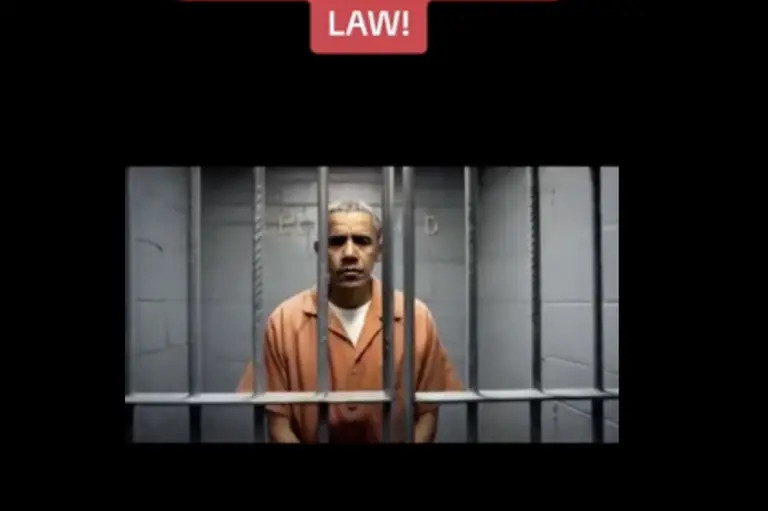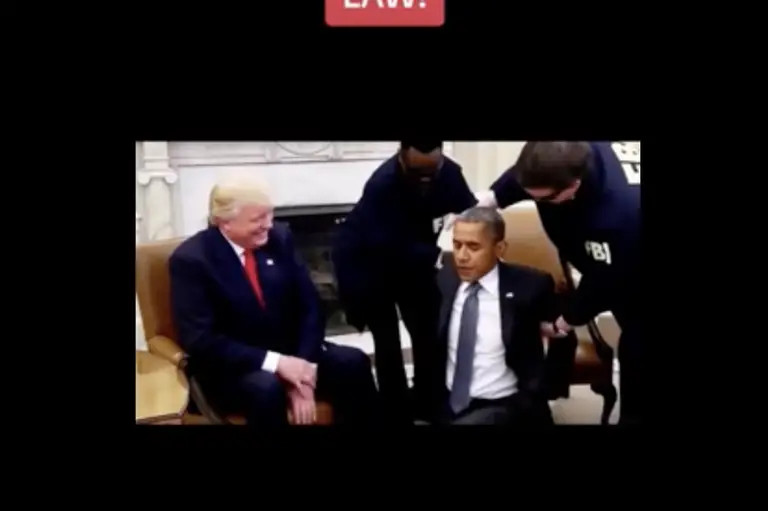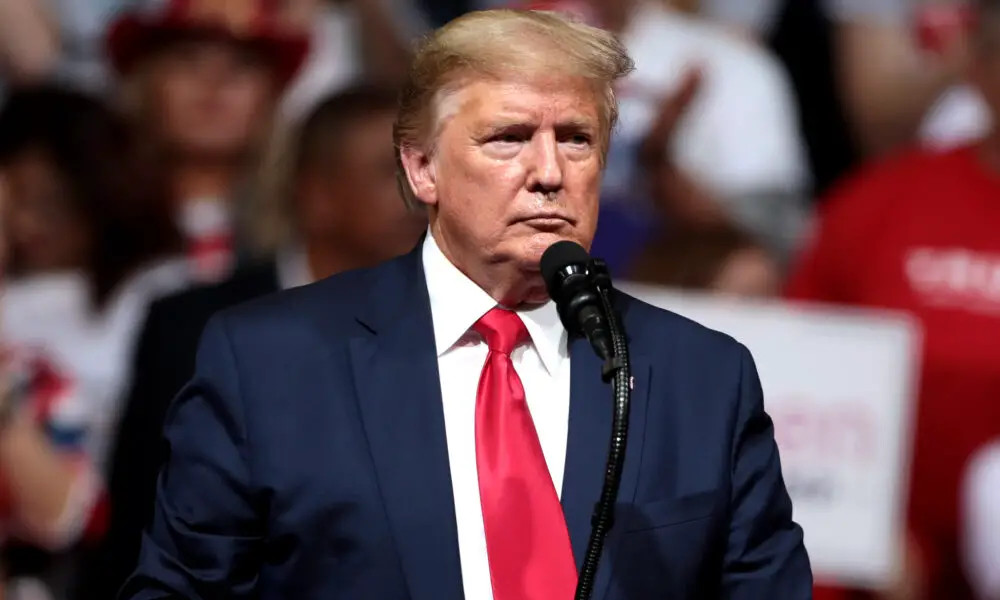Donald Trump’s Controversial AI-Generated Video Post
In recent months, Donald Trump has made headlines for a variety of reasons, but his latest social media post has ignited a firestorm of controversy. The former president shared an AI-generated video on Truth Social that depicted former President Barack Obama being arrested by FBI agents in the Oval Office. The video, which presented a fictional scenario featuring Obama in handcuffs, lacked any disclaimer indicating that it was not real. This omission has raised significant ethical questions about the use of artificial intelligence in political discourse and the responsibility of public figures when sharing such content.
The video was accompanied by the provocative caption, “No one is above the law,” and featured the catchy tune of The Village People’s classic, “Y.M.C.A.,” a song Trump has frequently employed during his rallies. By pairing this fictional narrative with a nostalgic tune, Trump aimed to elicit strong emotions from his audience. The context of the video clips included an actual moment from November 2016, when Obama and Trump sat together in the Oval Office, shortly before Obama vacated the presidency. By juxtaposing this real footage with the fabricated arrest scene, the video creates a jarring and misleading narrative that could easily confuse viewers. This blending of fact and fiction raises not only questions about truth in media but also the potential for manipulation of public perception.
Political Context and Recent Accusations
This video post coincided with a significant political moment, as former congresswoman Tulsi Gabbard, now the Director of National Intelligence, made serious allegations against officials from the Obama administration. Gabbard claimed that these officials “manufactured intelligence” regarding Russian interference in the 2016 presidential election. This statement is particularly weighty given the ongoing discourse surrounding election integrity in the United States. She asserted that her findings would be forwarded to the Justice Department for potential criminal referrals – a move that underscores the ongoing political tensions surrounding the legitimacy of the 2016 election and the subsequent investigations into foreign meddling. The implications of such accusations resonate deeply within the political landscape, as they touch on themes of accountability and trust in government institutions.

In her statement, Gabbard articulated a grave concern regarding the integrity of the American democratic process. She emphasized that the actions of those she accused were an attack on the will of the American people, suggesting that there was an organized effort to undermine Trump’s presidency. “Their egregious abuse of power and blatant rejection of our Constitution threatens the very foundation and integrity of our democratic republic,” she declared. This perspective has not only fueled her narrative but has also resonated with segments of the public that feel disenchanted with the political elite. The convergence of Gabbard’s statements and Trump’s provocative video appears to be a strategic move to galvanize support among disillusioned voters, further muddling the already complex political atmosphere.
Reactions from Political Figures
The fallout from Gabbard’s announcement has led to a variety of reactions from political figures. Senator Mark Warner of Virginia, who serves as a ranking member on the Senate Intelligence Committee, dismissed Gabbard’s claims, labeling them as “one more example of the director of national intelligence trying to cook the books.” This response illustrates the deep divisions within the political landscape, as accusations of conspiracy and corruption continue to rise on both sides. Warner’s dismissal is indicative of the broader skepticism that many lawmakers feel toward claims made without substantial evidence, highlighting the need for a more rigorous fact-checking process in political discourse.
Trump’s AI-generated video has not only added to the drama but has also raised crucial discussions about the ethical implications of using artificial intelligence in political communication. This incident feeds into a broader narrative about misinformation, the responsibilities of public figures, and the impact of digital content on public perception. Many experts in media ethics are expressing concern that such fabricated portrayals could further exacerbate societal polarization by blurring the lines between reality and fiction. With the rise of deep-fake technology, the potential for misuse is greater than ever, making it imperative for society to establish clear guidelines for the ethical use of AI in media.

AI and Misinformation in Politics
As technology continues to advance, the realm of misinformation has expanded dramatically. AI-generated content, like the video shared by Trump, poses unique challenges for both consumers and creators of information. The ability to produce realistic-looking images and videos raises questions about authenticity and trustworthiness. In political contexts, the stakes are even higher, as distorted representations can significantly influence public opinion and voter behavior. The phenomenon of “fake news” has already shown the power of misinformation to sway elections and shape public discourse; AI-enhanced content could amplify these effects exponentially.
Critics argue that the use of AI in such a manner can be seen as a weapon, capable of undermining democratic processes. As seen in this instance, the potential for AI-generated content to mislead and manipulate is profound, necessitating a call for greater accountability among public figures and the platforms that host their content. It becomes imperative for consumers to remain vigilant and discerning when engaging with online media, as the line between reality and fiction grows increasingly blurred. Education in media literacy is essential, as individuals must learn to navigate this complex digital landscape where AI technology can be both an asset and a liability.
In conclusion, Trump’s provocative AI-generated video of Obama serves as a striking reminder of the complex interplay between technology, politics, and ethics. The ramifications of such content are far-reaching, affecting not only immediate perceptions but also long-term trust in political institutions. As these discussions evolve, it is crucial for society to grapple with the implications of AI on democracy and to ensure that the integrity of information is preserved. The responsibility lies not only with the creators of such content but also with the audiences who consume it, highlighting the need for critical engagement in an era where misinformation reigns supreme. To foster a healthy political environment, it is essential that all stakeholders—government officials, tech companies, and citizens alike—come together to address these pressing challenges head-on.

















